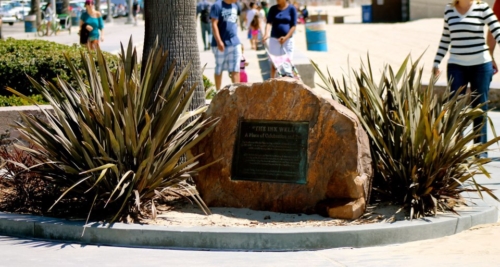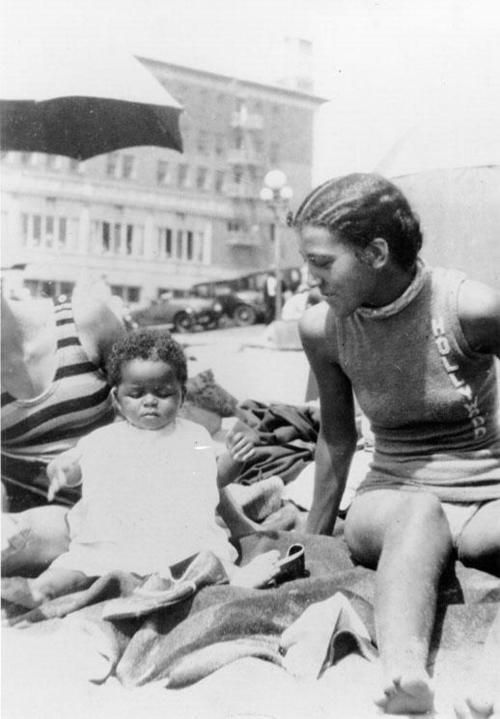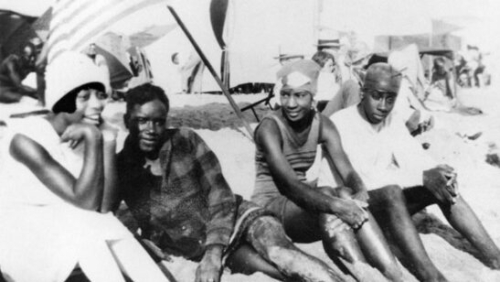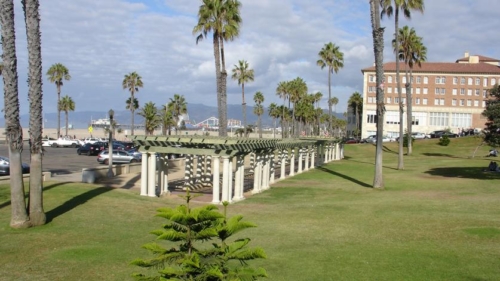Bay Street Beach Historic District

- Known As
- –
- Architect
- –
- Built
- –
- Designated
- July 9, 2019
The Bay Street Beach Historic District became Santa Monica’s first district in the National Register of Historic Places in 2019. The 53-acre district, entirely on public trust lands, recognizes this important coastal history and celebrates a rarity: a 100-plus-year-old intact African American seaside cultural landscape. During the Jim Crow era, the beach was self-selected by African Americans as a place of recreation and leisure where they felt relatively safe from racist, anti-black harassment.
The successful nomination for the Bay Street Beach Historic District required extensive documentation and advocacy by historian Alison Rose Jefferson and Michael Blum, Executive Director of Sea of Clouds, a nonprofit focusing on coastal heritage conservation/historic preservation and environmental conservation. The Bay Street Beach Historic District increases the number of listings associated with communities of color, which at this time is less than five percent of the total 93,000 properties and 1.4 million individual resources represented on the Register.
From the 1910s to the early 1960s, African Americans were able to locate some places of leisure where they were relatively free from bigotry to enjoy themselves and take pleasure in the picturesque outdoor offerings of the state. At that time, discrimination and restrictive real estate covenants prevented them from buying property in certain areas. In addition, African Americans were kept from using various public and private accommodations because California’s civil rights laws, dating from 1893, weren’t being enforced.
The Bay Street Beach served as an important gathering place for African Americans long after racial restriction attempts at public beaches were abandoned in 1927. This seaside refuge was located down the hill from nearby Phillips Chapel Christian Methodist Episcopal (CME) Church, the first African American church established in Santa Monica in 1905, and the earliest African American community settlement in the 4th and Bay Streets vicinity.
The African American beach site was originally situated near Pico Boulevard where Shutters Hotel and the Casa del Mar are today, south to Bicknell Street. It emerged as a popular gathering place for African Americans from the Santa Monica and the Los Angeles County environs into the mid-1960s. Here, they enjoyed the ocean breeze, swim and games with less racially motivated harassment than at other Southland beaches.
History suggests white Americans probably first used the controversial term “Inkwell” to describe more than one leisure site around the United States associated with African Americans during the Jim Crow era. This term was a derogatory term referencing the “blackness” of the beach-goers’ skin color. Agency was taken by some African Americans to repurpose the offensive term to describe these places they frequented and enjoyed, transforming the hateful moniker into a badge of pride or belonging. The name “Inkwell” has not been used or recognized universally within any community as the name of these leisure locations, with some people refusing to ever use this alternative name.
Although this site was enjoyed by African Americans, there were white American homeowners and business people in the Bay cities who tried unsuccessfully to “purge” them this stretch of the beach.
Protective League, which included local white residents and businessmen, blocked the development effort of a black investment group. the Ocean Frontage Syndicate. Led by Norman O. Houston and Charles S. Darden, Esq., the investment group had plans to build a “first-class resort with beach access” where Shutters Hotel is located today near Pico Boulevard.
There were personal assaults on African Americans to inhibit their freedom to use the public beaches to the north and south of the City of Santa Monica. By 1927, the National Association for the Advancement of Colored People (NAACP) legally challenged these discriminatory practices and attempts at racial restriction at public beaches began to fade away.
On February 7, 2008, the City of Santa Monica officially recognized this important gathering place, as well as African American and Mexican American surfer Nick Gabaldon, with a landmark monument at Bay Street and Oceanfront Walk. The plaque reads, “A Place of Celebration and Pain.” On June 26, 2019 more recognition of the site’s national, state and local significances was recognized with the Bay Street Beach Historic District being nominated for listing on the National Register of Historic Places.
As we reflect on our American, Californian and Santa Monican heritage, we are encouraged to take a closer look at our history, which includes the Bay Street Beach and Nick Gabaldón.
Sources:
Jefferson, Alison Rose. Living the California Dream, African American Leisure Sites During the Jim Crow Era. University of Nebraska Press, 2020 (January).
DeGraaf, Lawrence B. “The City of Black Angels….1890-1930.” Pacific Historical Review, Vol. 39, No. 3 (August 1970): 323-352.
Flamming, Douglas. Bound For Freedom: Black Los Angeles in Jim Crow America. Berkeley, CA: University of California Press, 2005.
Scott, Paula. Santa Monica: A History on the Edge. Charleston, South Carolina: Arcadia Publishing, 2004.


